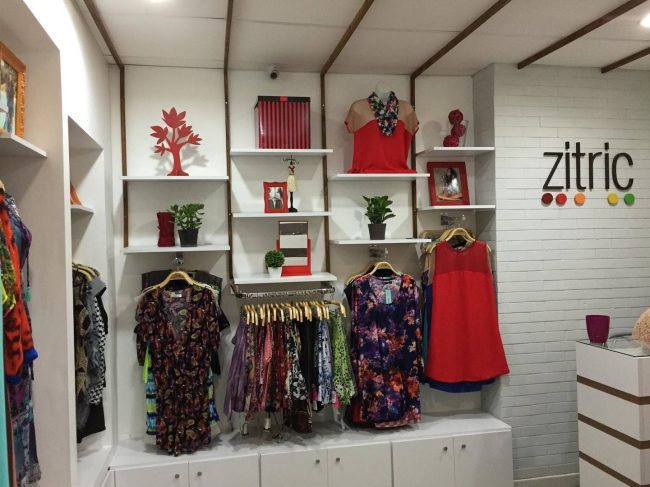In an ever-evolving retail landscape, marked by rapid digitalization and shifting consumer behaviors, the balance between online and offline channels has become a critical focus for brands worldwide. In this interview with Mariana Pais, a renowned Fashion Retail Consultant, we explore key insights into the current state of retail, the challenges it faces, and the technologies shaping its future. From the resilience of brick-and-mortar stores to the rise of e-commerce, the conversation delves into how brands can leverage a hybrid approach to thrive in today’s competitive market. We also touch on customer loyalty, innovation, and what it takes for a store to succeed in an era where experiences are becoming as valuable as the products themselves. Through these discussions, we gain a clearer understanding of retail’s future, where the blend of technology, human connection, and experiential offerings will define success.
Interview Retail: Technology, a powerful tool in retail
We start by assessing the current context of the retail sector. Mariana, do you think offline retail will disappear?
It is unlikely that offline retail will ever disappear. While the retail landscape is undeniably shifting towards digital, offline stores continue to play a critical role. In 2023, offline sales still accounted for 75% to 78% of global retail sales, which demonstrates their resilience and relevance. Rather than viewing online and offline as competing channels, we should embrace a hybrid model where both coexist and complement each other.
Offline stores offer unique value propositions that online cannot fully replicate—such as the immediacy of human interaction, tactile product experiences, and the ability to provide a curated and immersive brand environment. The post-pandemic era even saw growth in physical store openings, indicating a continued demand for in-person shopping experiences. Brands should focus on leveraging the strengths of offline retail, such as exclusivity, scarcity, and a deep connection with customers.
Moreover, offline should be seen not just as a standalone channel but as an integral part of an omnichannel strategy. Physical stores are increasingly becoming experiential hubs where customers can connect emotionally with the brand. Offline experiences drive online sales by serving as a ‘showroom’ for online purchases, thus brands need to integrate and analyse their online and offline data cohesively. In this way, offline stores will remain a fundamental pillar of the retail ecosystem.

What are the defects and virtues in front of online retail?
Online retail has several undeniable virtues, with convenience being the most significant. The speed, ease of access, and global reach of online shopping provide customers with unparalleled choices and agility. The online channel has revolutionized how consumers shop, breaking down geographical barriers and expanding market opportunities. However, with these advantages come challenges, particularly around sustainability and consumer behaviour.
One of the key drawbacks of online shopping is that it often encourages impulsive buying due to its immediacy and ease. With just a few clicks, customers can make a purchase without the same level of contemplation that might occur in a physical store. This impulsivity can lead to overconsumption, waste, and a higher rate of returns, all of which have negative environmental impacts. In contrast, offline shopping typically involves more deliberate decision-making as customers physically explore products and engage with sales staff. This more measured approach can lead to more thoughtful and sustainable purchases.
One of the key drawbacks of online shopping is that it often encourages impulsive buying due to its immediacy and ease
Additionally, the vast accessibility and broader range of options online can undermine the sense of exclusivity that is particularly valued in niche markets like luxury. In response, some luxury brands implement strategies such as limited editions and high pricing to maintain their exclusivity online. However, the volume and speed of online transactions can sometimes dilute the brand experience.
For brands, venturing into online retail is not merely about setting up a website; it involves significant investment in digital marketing, logistics, and customer service. Successful online retail requires a robust strategy involving data analytics, customer experience optimization, and a deep understanding of digital marketing tools to drive visibility and engagement.
What is the biggest problem or weakness that retail has to face?
The most significant challenge that retail faces today is the unprecedented level of competition, combined with rapidly shifting consumer behaviours and technological advancements. The market is oversaturated with options, and brands must navigate an environment where customer loyalty is no longer a given. The accelerated pace of societal change means that what is relevant today might not be relevant tomorrow. Retailers must be incredibly agile to stay ahead of these changes, constantly adapting their strategies to meet evolving consumer needs.
The speed of change in consumer expectations, coupled with the rise of digital channels, has led to a fundamental transformation in how retail operates. To stay competitive, brands must move away from traditional, bureaucratic processes and long business plans. Instead, they must adopt a more dynamic approach: test, learn, and iterate quickly. The “startup mentality” is essential—this means focusing on flexibility, speed, and the ability to pivot based on real-time feedback from the market.
The most significant challenge that retail faces today is the unprecedented level of competition
A major challenge is also the need to innovate while remaining sustainable and authentic. With increasing awareness of environmental and social issues, customers are demanding more from the brands they support. This puts pressure on retailers to deliver not just products but meaningful experiences that align with these values. Retailers need to balance the integration of new technologies—like AI, data analytics, and omnichannel solutions—while ensuring that their core values of transparency, ethics, and sustainability are not compromised.
Another crucial weakness in retail is the disconnect that often exists between online and offline channels. While both are crucial, brands must work towards a seamless, integrated experience. This means treating offline not just as a sales channel but as an experience hub that supports online sales and strengthens the overall brand identity. It requires rethinking the role of physical stores to focus on personalization, curation, and customer experience—areas where offline has a unique advantage.
Furthermore, the concept of “Humanity is Calling” cannot be overlooked. Amidst the rapid adoption of automation and AI, there is a growing need to prioritize human connection, empathy, and active listening. Retailers must recognize that their employees are not just salespeople but brand ambassadors who create meaningful connections with customers. In a world increasingly defined by technology, maintaining the human touch is a vital differentiator.
Amidst the rapid adoption of automation and AI, there is a growing need to prioritize human connection, empathy, and active listening.
Retailers must also focus on creating a culture of continuous learning and innovation. The future of retail lies in being proactive rather than reactive—anticipating changes before they happen and fostering an environment where innovation thrives. This means being open to new business models, partnerships, and collaborations that can offer new value propositions and extend the brand’s reach.
In summary, the biggest problem in retail is not a single issue but a complex interplay of rapid change, intense competition, technological disruption, and evolving consumer expectations. The path forward involves balancing these elements while staying true to the brand’s core values and adapting to the ever-changing landscape.

What role does technology play in retail? Does it help to engage customers? Highlight a current technology or innovation that you believe is setting a trend.
Technology is a powerful tool in maximizing retail results. By leveraging data collection, technology enables brands to understand their customers better and tailor offerings that suit them, thus extending the relationship with customers.
One of the key trends in retail technology today is the use of Artificial Intelligence (AI) and Machine Learning (ML) to enhance the customer experience. These technologies help analyse consumer data to predict shopping behaviour, optimize pricing strategies, and provide personalized recommendations, enhancing customer satisfaction and loyalty.
A noteworthy example is how brands like Chanel leverage technology without relying on online sales. Although Chanel does not sell its products directly online, the brand’s digital presence through its website and social media is exceptionally strong. Chanel uses advanced digital marketing strategies and AI-driven content personalization to create highly engaging experiences that tell the brand’s story, cultivating a deep emotional connection and desire among customers. This approach demonstrates that even without e-commerce, technology can effectively engage customers and drive brand loyalty.
Another innovation setting a trend is Augmented Reality (AR), which is being used by several retailers to enhance the shopping experience. AR allows customers to visualize products in their home environment or see how clothes would fit them without physically trying them on, bridging the gap between online and offline shopping.
One of the key trends in retail technology today is the use of Artificial Intelligence (AI) and Machine Learning (ML) to enhance the customer experience.
What does it take for a store to work? Is there a magic recipe?
There isn’t a universal formula for a store to succeed because every market, product, and target audience has unique characteristics and needs. However, there are six key principles that every store should consider to thrive:
- Understanding the Market and Adaptability: Staying aware of market trends, customer behaviours, and preferences allows brands to adapt strategies without compromising their core identity. Agility and the ability to anticipate changes are crucial for long-term success.
- Location, Location, Location: A strong location strategy is critical for both offline and online retail success. For physical stores, being in the right location—one that is accessible, has high foot traffic, and is surrounded by complementary brands or services—can significantly impact visibility and sales. Neighbouring stores can drive potential customers your way, and accessibility can enhance the overall shopping experience. For online stores, “location” translates to digital visibility. This involves using digital tools like SEO, paid advertising, and social media to ensure your brand stands out in a crowded digital marketplace. Both online and offline, being “visible” in the right place is crucial to driving customer engagement and sales.
- Transparency and Building Trust: Modern consumers value honesty and authenticity. Brands that are transparent about their values, processes, and stories build trust and loyalty. A strong, authentic narrative can differentiate a brand and encourage repeat business.
- Creating an Exceptional Customer Experience: Stores should offer more than just a transactional experience. Sales staff should be seen as Sales Ambassadors who create emotional connections with customers by telling the brand’s story. A unique and memorable in-store experience can make customers feel special and valued, which often surpasses price in importance.
- Fostering a Positive Internal Culture: A great customer experience starts with a motivated and passionate team. Employees should feel valued and empowered. A positive work environment translates to positive customer interactions, which are vital for brand loyalty.
- Sustaining Customer Relationships Beyond the Sale: The customer journey continues after the purchase. Successful stores invest in after-sales service—personalized follow-ups, exclusive offers, and thoughtful packaging—to keep customers engaged and loyal. Building a community where customers feel valued turns them into brand advocates.
Conclusion: While there may not be a “magic recipe” for success, a store can create a strong foundation by focusing on these six key principles: understanding and adapting to the market, securing a strategic location, building trust through transparency, creating exceptional in-store experiences, fostering a positive internal culture, and maintaining strong post-sale relationships. When these elements come together, they help a brand stand out, attract loyal customers, and achieve long-term success.

How is customer loyalty achieved? How do you engage your customers?
Customer loyalty is not simply about repeat transactions; it is about creating meaningful, long-term relationships. To achieve this, brands must focus on understanding the full spectrum of their customers’ needs, desires, and values. This involves building a strong emotional connection through consistent and authentic engagement at every stage of the customer journey. Successful brands know how to tell a compelling story that resonates with their target audience. This storytelling goes beyond just promoting products; it’s about sharing the brand’s values, heritage, and purpose. By emphasizing elements such as craftsmanship, history, and the artisans behind the scenes, brands create an emotional connection that fosters a sense of belonging and makes customers feel like they are part of a larger narrative.
Successful brands know how to tell a compelling story that resonates with their target audience
Additionally, personalization is key to customer engagement. Brands must leverage data to understand individual customer preferences and deliver tailored experiences, whether it’s through personalized marketing, curated product recommendations, or bespoke in-store services. Memorable experiences—such as exclusive events, limited-edition releases, or unique in-store interactions—can significantly enhance customer loyalty by making customers feel valued and special. Engaging customers effectively also requires a seamless and consistent approach across all touchpoints—online and offline. From social media and email marketing to in-store experiences and customer service, every interaction should reinforce the brand’s message and values. Follow-up communications, such as personalized thank-you notes or exclusive offers, can extend the relationship beyond a single purchase, encouraging repeat business.
Today’s customers want to feel like they are part of a community that shares their values and interests. Brands can build such communities by creating spaces—physical or digital—where customers can connect, share experiences, and feel a sense of belonging. Initiatives like loyalty programs, member-exclusive content, or community-driven events help foster a sense of connection and loyalty. Moreover, great customer service is a cornerstone of customer loyalty. This means being proactive, responsive, and empathetic to customer needs and concerns. After-sales support, such as easy returns, efficient customer service, and genuine follow-up, demonstrates that a brand cares about its customers beyond the point of sale. A positive customer service experience can turn a one-time buyer into a lifelong advocate.
Technology plays a crucial role in deepening customer engagement
Technology also plays a crucial role in deepening customer engagement. AI and machine learning, for example, allow brands to anticipate customer needs and offer personalized solutions in real-time. Chatbots, virtual shopping assistants, and data analytics tools help create a seamless, omni-channel customer experience that feels cohesive and personalized, driving higher engagement and loyalty. At the same time, modern consumers are increasingly driven by purpose, seeking brands that align with their values. Brands that are transparent, ethical, and socially responsible build deeper trust and loyalty. Showcasing efforts in sustainability, ethical sourcing, or social causes can attract customers who prioritize these values, turning them into loyal advocates.
Achieving customer loyalty, therefore, requires a comprehensive, strategic approach that focuses on creating authentic, personalized, and meaningful relationships. Brands that succeed are those that tell a compelling story, consistently engage across all touchpoints, invest in community building, provide outstanding customer service, leverage technology, and align with their customers’ values. By integrating these strategies, brands can turn customers into loyal supporters and advocates for the long term.

How do you see the future of retail?
The future of retail is set to evolve significantly from its traditional transactional focus towards a more relational and experiential approach. We are living in an era of hyper-connectivity, where the rapid advancements in globalization and digitalization have greatly empowered consumers. This empowerment has made them more informed, impatient, and demanding, which poses both challenges and opportunities for brands.
In this shifting landscape, the ability to build meaningful relationships with customers will become increasingly important. Retailers will need to move beyond simply selling products to creating unique and immersive experiences that resonate on an emotional level. This shift is exemplified by recent high-profile partnerships such as Dolce & Gabbana’s collaboration with Smeg and Hermès’s association with Apple Watch. These collaborations are not just about combining products but about crafting distinctive experiences that capture the imagination and engage customers in new and exciting ways.
The ability to build meaningful relationships with customers will become increasingly important
Additionally, brands will be expected to celebrate and incorporate local cultures into their offerings. For example, Cartier’s innovative store design in Japan, featuring elements of traditional Japanese culture, showcases how retail can honour and reflect local heritage. This approach not only enhances the shopping experience but also fosters a deeper connection between the brand and its customers.
As consumer preferences continue to evolve, there is a noticeable shift towards valuing experiences over mere products. This trend is particularly evident in the luxury sector, where the success of brands is increasingly tied to their ability to offer exceptional, emotionally engaging experiences rather than just high-quality goods. The focus is shifting towards creating memorable moments and interactions that forge a deeper bond with consumers.
In summary, the future of retail will be defined by its ability to adapt to a more relational and experiential model. Brands that can effectively navigate this transition—by fostering meaningful partnerships, celebrating cultural diversity, and prioritizing emotionally resonant experiences—will be well-positioned to thrive in an increasingly connected and demanding consumer landscape.







